What Kind of Clay Is Required for Ceramic Pottery?
Earthenware clays, stoneware clays, ball clays, fire clays, and porcelain clays are the five types of ceramic pottery clays. Earthenware clay bodies, mid-fire stoneware clay bodies, and high-fire stoneware clay bodies are the three most often used ceramic clays. Clay bodies can also be made by combining dry clays and additions with water to make your own.
A ceramic artist is anyone who makes ceramic objects or works of art. A ceramic artist is sometimes known as a ceramist. Someone who works with clay may be referred to as a ceramicist, sculptor, potter, or just an artist. Ceramics are clay materials that, when fired, permanently change their characteristics.
1. Kaolin Clay
Kaolin clays are utilized in porcelain because of their mineral purity. Although kaolin unfired clay come in a variety of colors, they are all relatively light. When they’re wet, they’ll be light grey, and when they’re dry, they’ll be a mix of light grey, buff, near-white, and white.
Soft white clay is a key element in the manufacturing of china, porcelain, and is widely used in creating paper, gum, paint, and many other items. Kaolin is also known as china clay. Kaolin is named after the hill that has been mined for generations in China (“High Ridge”, a village near Jingdezhen in southeastern China’s Jiangxi Province).
Kaolin specimens of material used by the Chinese in the manufacturing of porcelain were first delivered into Europe by a French Jesuit missionary from around 1700 to 1727.
In nature, kaolin, as we find it, usually has variable quantities of other minerals such muscovite, quartz, feldspar, and anatase. In addition, iron hydroxide pigments often color unrefined kaolin yellow.
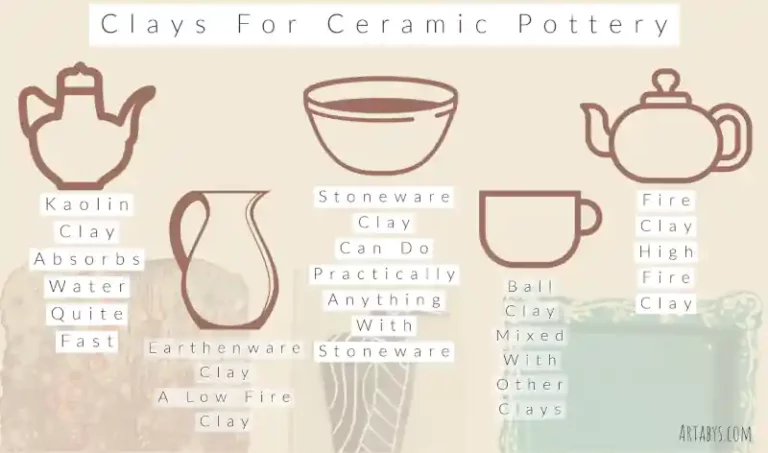
In order to remove the iron pigment and wash it with water, it is usually essential to blanch it chemically to remove the other minerals to prepare kaolin for commercial usage.
Kaolin is a natural white, soft powder, mainly made up of mineral kaolinite, consisting of roughly hexagonal platy crystals. These crystals can also take horizontal-like shapes.
If kaolin is mixed in a range of 20 to 35 percent with water, it becomes plastic and retains its shape. The kaolin forms a slurry or watery suspension with higher percentages of water. The amount of water needed for plasticity and viscosity depends on the size of kaolinite bits, and also on particular substances found in kaolin.
Kaolin has a low shrink and swell capacity and is soft, earthy, and white clay. Kaolin is the principal component of porcelain.
The principal thing to remember about kaolin clay is the ceramic industry widely uses Kaolin, which makes it particularly appropriate for the manufacturing of China porcelain because of its high fusion temperature and white burning qualities.
These desired ceramic characteristics are predicated on the lack of iron, alkali, and alkaline earth in the molecular structure of kaolinite.
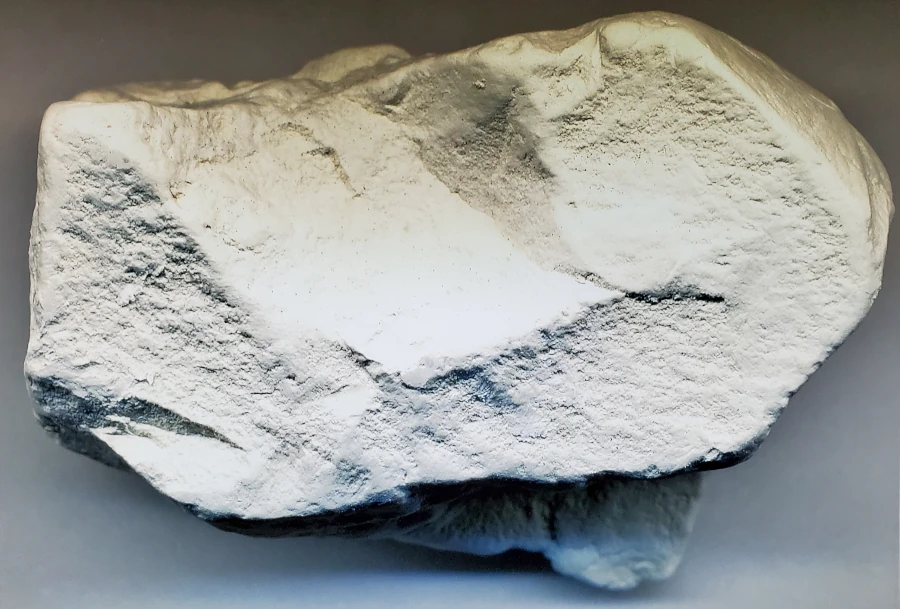
In the production of “whiteware”, the kaolin is blended with about equal quantities of silica and feldspar and considerably less light-burning plastic clay, which is known as ball clay. These additions improve the qualities of plasticity, shrinkage, and vitrification.
2. Ball Clay
Due to their significant shrinkage during drying and firing, ball clays cannot be utilized on their own. They are, however, particularly beneficial when mixed with other clays to improve workability and plasticity.
Ball clays or plastic clays are fine-grained sedimentary high plastic clays that fire lightly or close to white. They are employed mostly in ceramic “whiteware” manufacturing and their key plasticity and light-fired color.
The ball clays have very diverse structures and are made up principally of kaolinite (20 to 80 percent), mica (10 to 25 percent), and quartz (6 to 65 percent). In a pre-fired ceramic body, ball clay works as a binding agent and adds to plasticity, workability, and strength. Some are highly prized for their fluid and casting qualities, which are particularly important in the fabrication of sanitary ware.
The term “ball clay” is thought to have come from the time when the clay was dug by hand. It was chopped into 15 to 17-kilogram cubes, and the corners of the cubes gradually rounded off during shipping, leaving “balls.”
Ball clays have been used in ceramics in Britain since at least the Roman era. In the 16th and 17th centuries, they required clay to make tobacco pipes, which stimulated a more modern trade.
The main thing to remember about ball clay is it is fine-grained and flexible in nature, and when fired, forms an exceptional quality white-colored pottery body, which is why they are so popular among potters.
3. Fire Clay
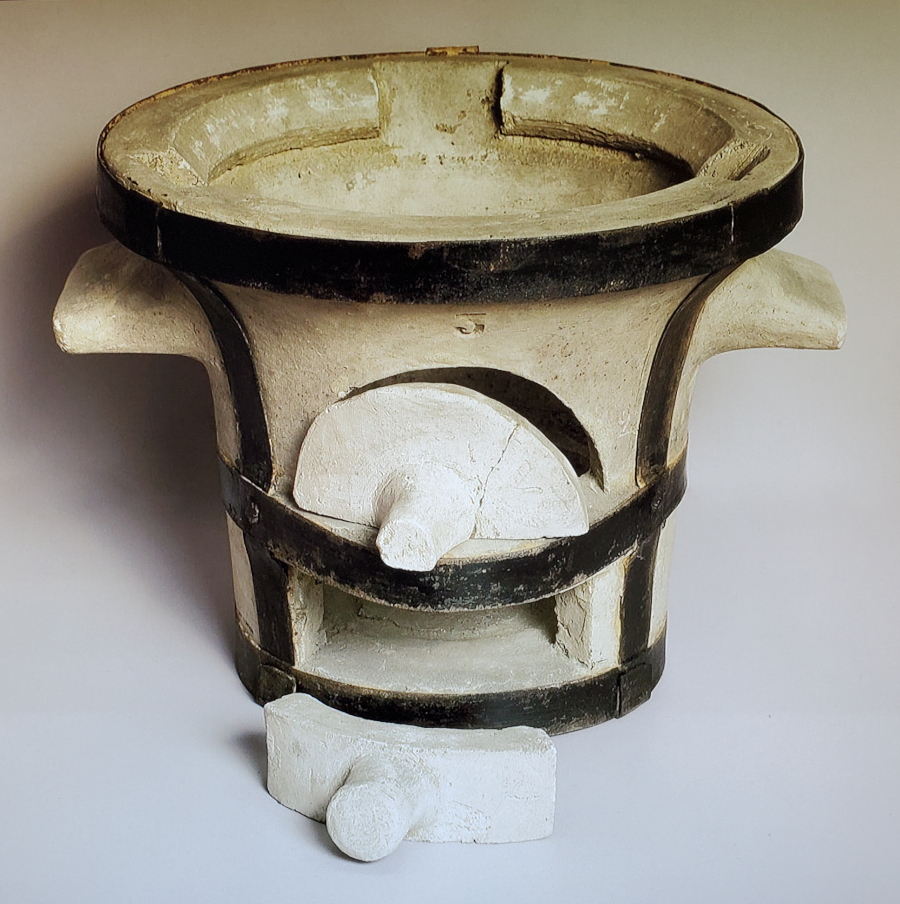
The qualities of fire clays vary greatly. Their high firing range is their distinguishing feature. They reach maturity at about 2696°F or 1500°C. Although they are mostly devoid of mineral impurities, they have iron spots that give them a speckled appearance when fired.
Fire clay is a kind of refractory clay used in the production of ceramics, particularly fire brick.
Fire clay is mud having a higher Alumina content than regular mud. Its color is typically whiter-lighter, whitish to yellowish, pinkish, or light brownish. It’s also reasonably priced. Fire clay is still very heavy and comes in sacks of the dry powdered form. Alumina level in fire clay typically ranges from 24 to 34 percent, with silica content ranging from 50 to 60 percent.
What is Raku Firing Technique? – Raku firing is a type of low-temperature firing. Volatile parts of compounds and molecules in the clay/glaze break away during a Raku firing, and the free oxygen clings to the remaining material. Oxides are formed as a result of this. This is referred to as oxidation. The oxidation modifies the glaze’s color as well as the texture of your clay. The changes might be rather profound at times.
What Are The 3 Types Of Ceramics? – Ceramic or pottery may be divided into three categories: Earthenware, stoneware, and porcelain. Read the article if you want to know the key differences. Can be very helpful when considering a purchase to know what you are getting.
Is Low Fire Clay Food Safe? – When covered with a food-friendly glaze, low-fire clay is safe to eat. Unglazed clay surfaces may be considered food safe when covered with a food-friendly glaze and fired to full maturity because the clay particles vitrify sufficiently. However, you should read the entire essay since there are a few caveats.
Because fire clay is resistant to high temperatures and has greater fusion points, it is excellent for lining furnaces, as fire brick, and the manufacturing of metalworking tools such as crucibles, saggars, retorts, and glassware. Because of its durability during kiln firing, it may be utilized to manufacture intricate objects of pottery such as pipes and sanitary ware.
4. Stoneware Clay
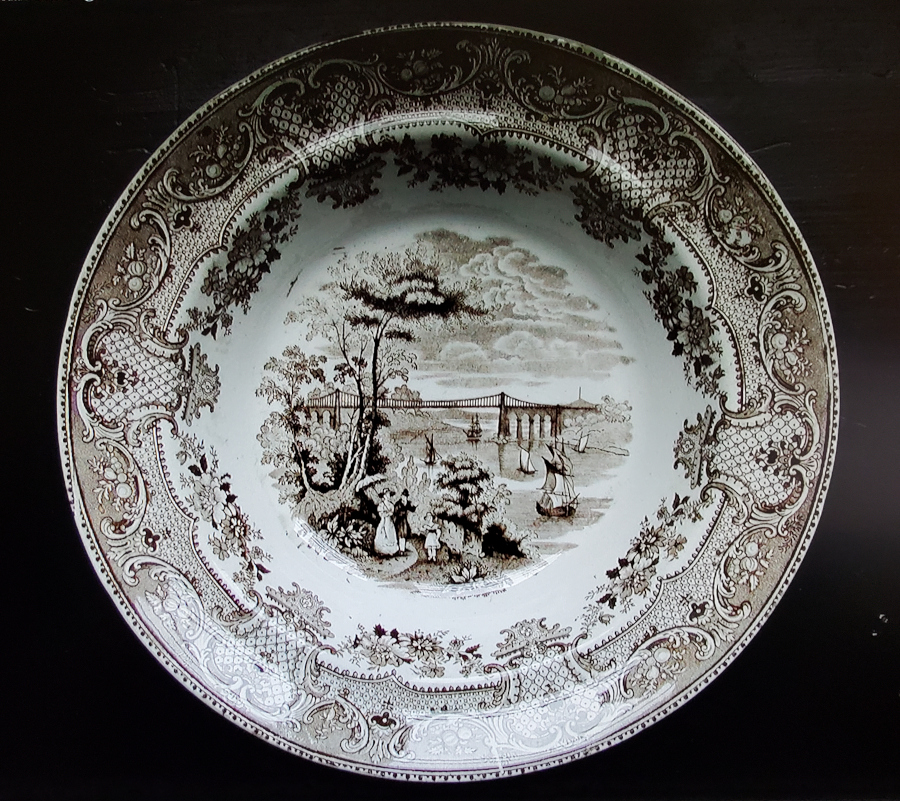
When wet, stoneware clays are flexible and appear grey. Light grey and buff to medium grey and brown are among the burned colors. The type of fire has a significant impact on the color of the finished product.
Mid-fire stoneware clay bodies are designed to fire to maturity between 2150 and 2260 degrees Fahrenheit or 1160 C and 1225 C. High-fire stoneware clay bodies are fired to their mature hardness between 2200 and 2336 degrees Fahrenheit or 1200 C and 1300 C.
5. Earthenware Clay
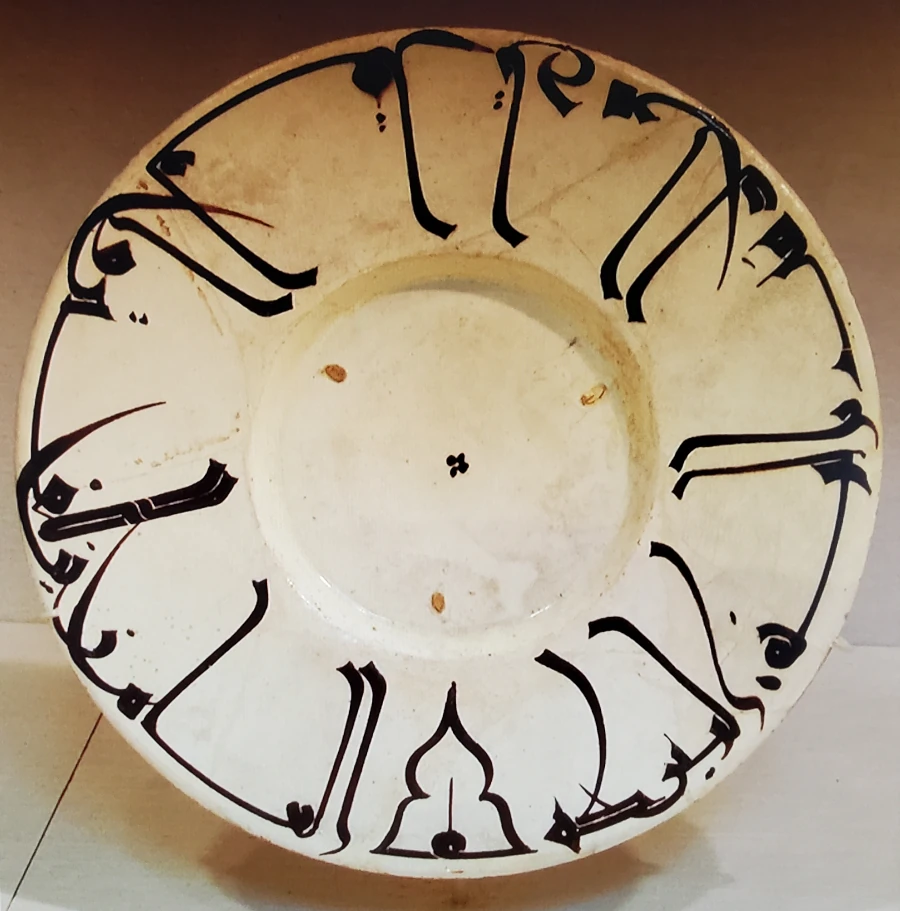
Earthenware clays are the most popular form of clay and were some of the first clays utilized by potters. The clays are easy to work with, however, they can be sticky. Iron and other mineral impurities in earthenware clays lead the clay to acquire optimum hardness between 1745°F and 2012°F or 950°C to 1100°C.
Red, orange, yellow, and light gray are common colors for damp earthenware clays. Brown, red, orange, buff, medium grey, and white are some of the colors used in baked earthenware. The concentration of mineral impurities and the manner of burning both have a substantial impact on the color of fired materials. Terracotta, which literally means “baked earth,” is one of the most common forms of earthenware.
Basic earthenware, also known as terracotta, absorbs liquids like water. Earthenware may be made liquid-resistant by coating it with a ceramic glaze, which the vast majority of modern domestic earthenware does. Porcelain, bone china, and stoneware are the most important other varieties of pottery, all of which are fired at high enough temperatures to vitrify.
Did you know Earthenware includes “most building bricks, practically all European pottery up to the seventeenth century, most Egyptian, Persia, and Near Eastern products; Greek, Roman, and Mediterranean crafts, and some Chinese wares?
Ceramic Firing Techniques – Firing is the process of creating ceramics that can withstand a great deal of pressure. The firing occurs in an oxygen-rich environment. When it comes to firing pottery, there are two basic approaches. The two procedures are kiln firing and open firing. Firing is a critical stage in the ceramic process. It’s when clay goes from being clay to being useful ceramic.
Earthenware now makes up the majority of our dinnerware. Pit-fired Earthenware clay as opposed to being fired in a kiln dates back to 29,000 to 25,000 BC.
Earthenware is opaque and non-vitreous after firing, soft, and scratchable with a knife. According to the European Communities Combined Nomenclature, it is white or light-colored and made of chosen clays that are sometimes blended with feldspars and different proportions of other minerals.
In general, earthenware bodies are more pliable than most white-ware bodies, making them simpler to shape with a RAM press, roller-head, or potter’s wheel than bone china or porcelain.
Earthenware, with a water absorption rate of 5-8 percent, must be glazed to be watertight because of its porosity. Because earthenware has lower mechanical strength than bone china, porcelain, or stoneware, objects with a thicker cross-section are more typically created, albeit they are still more readily chipped.
Darker-colored terracotta earthenware, often orange or red because of a high iron oxide concentration, is commonly used for flower pots, tiles, and some decorative and ovenware.
Despite the fact that the most highly prized varieties of pottery frequently transition to stoneware and porcelain since specific cultures produced these, there are many artistically significant types of earthenware. They used earthenware in all Ancient Greek and Roman pottery.
Did you know hanging ceramic plates on the wall is back in fashion again? Read Artaby’s article called Tips On How To Hang Tour Plates. Build a plate wall the easy way.
Types Of Earthenware
1.Terracotta
Terracotta rather than being defined by technology, this phrase refers to a pretty diverse range of object kinds.
Terracotta is a phrase that is commonly used to describe earthenware sculpture as well as a variety of practical purposes such as vessels, particularly flower pots, water and wastewater pipes, roofing tiles, bricks, and surface ornamentation in building construction. The phrase is also used to describe the natural brownish-orange color of the majority of terracotta.
2. Redware
Redware is an abbreviation for “Re (America). Redware, as a single phrase, refers to at least two styles of pottery produced in Europe and North America over the last few centuries. Redware, as two terms, is a phrase used mostly by archaeologists to describe pottery discovered in a broad variety of locations.
3. Majolica from the Victorian era
Victorian majolica refers to two varieties of majolica produced in Europe and America in the second half of the nineteenth century.
The first, and most well-known, is mass-produced majolica adorned with colored lead glazes, made in the United Kingdom, Europe, and the United States; typically hard-wearing, relief-molded surfaces.
Second, there is the considerably less frequent tin-glazed majolica produced primarily by Mintons from 1848 to around 1880, with flat surfaces, opaque white glaze, and delicate brush painted design in imitation of the Italian Renaissance maiolica method and styles.
4. Lusterware
Lustreware, often known as Lusterware, is a form of pottery or porcelain with an iridescent metallic glaze. Metallic oxides in an overglaze finish are used to create it, which is then fired again at a reduced temperature in a “muffle kiln” or a reduction kiln, excluding oxygen.
5. Raku
Raku Ironstone china, a cross between earthenware and stoneware. Raku is a style of Japanese pottery that is traditionally used in tea ceremonies, most commonly in the shape of chawan tea bowls. It is typically distinguished by hand-shaped rather than thrown vessels that are fairly porous as a result of low firing temperatures, lead glazes, and the withdrawal of pieces from the kiln when still glowing hot. The fired raku piece is removed from the hot kiln and left to cool in the open air in the traditional Japanese method.
6. Yellowware
Yellowware, often known as yellow ware, is a form of earthenware named from the yellow color imparted by the clay used in its creation. It originated in the late 18th century in the United Kingdom and was also produced in the eastern United States beginning in the late 1920s.
7. Ironstone china
Ironstone china, ironstone ware, or simply ironstone, is a form of vitreous pottery that was invented in the early nineteenth century in the United Kingdom. It is frequently classified as earthenware while having the appearance and qualities of fine stoneware.
Saint-Porchaire Porcelain Earthenware
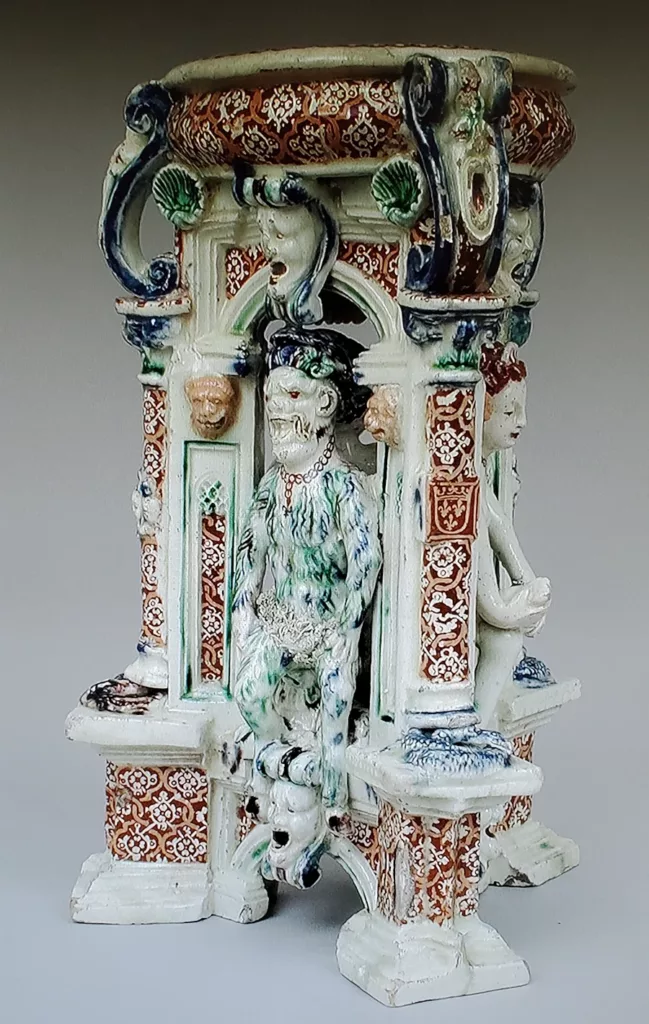
The highly rare Saint-Porchaire porcelain of the mid-16th century, reportedly manufactured for the French court, was possibly the most intricate earthenware ever made.
Three Fundamental Types Of Clays And Their Qualities
1. Porcelain (Kaolin Clay, Ball Clay, and Fire Clay)
It absorbs water quite fast, which can modify its working properties considerably. Porcelain is recognized as the most magnificent of all clay varieties when it comes to pottery or ceramics. It’s true porcelain and feels smooth as butter and has much less forgiveness than other clay. Porcelain and Ceramic cannot be melted down in recycling waste facilities.
2. Earthenware
This clay is essentially a clay with low fire. Because of its porous nature, it is commonly used for flowerpots, bricks, and other outdoor structures. But it’s important to note is water gets caught inside and freezes, it will crack. Because it’s easy to work with and shape, it’s a good clay for wheel throwing. I like it because it is great for hand-building as well. Because of its high iron oxide content, it is often red or orange (terracotta), but it can also be found in white.
3. Stoneware
Depending on how much sand or grog is added, you can do practically anything with stoneware. For novices, I thought it was a wonderful working clay. The hues vary from white to buff like sand, brown to various gray tints. It’s clay of less quality than porcelain but is better known for its durability and value. Is longer-lasting and resistant to chips, making it far more popular for dining products and cups.
References
Prasad, M. S., Reid, K. J., & Murray, H. H. (1991). Kaolin: processing, properties and applications. Applied clay science, 6(2), 87-119. sciencedirect.com/science/article/abs/pii/016913179190001P
Galos, K. (2011). Composition and ceramic properties of ball clays for porcelain stoneware tiles manufacture in Poland. Applied clay science, 51(1-2), 74-85. sciencedirect.com/science/article/abs/pii/S0169131710003728
Ries, H. (1922). The Clay Deposits of Kentucky: An Economic Consideration of the Pottery, Brick, and Tile Clays, Fire Clays, and Shales of Kentucky, with Notes on Their Industrial Development (Vol. 8). Kentucky Geological survey. https://books.google.com/books?hl=en&lr=&id=PqkRAAAAIAAJ&oi=fnd&pg=PP17&dq=Fire+Clay+properties+pottery&ots=cl-cFqiJWu&sig=U12XtbKXZgfQu2NYzWJ3IhnL91E#v=onepage&q=Fire%20Clay%20properties%20pottery&f=false
https://en.wikipedia.org/wiki/Saint-Porchaire_ware#/media/File:Salt_MET_LC-17_190_1744-006.jpg
https://en.wikipedia.org/wiki/Earthenware#/media/File:Plate_Buwayhid.JPG
https://en.wikipedia.org/wiki/Stoneware#/media/File:Select_Sketches_-_Menai_Bridge_1.jpg
https://en.wikipedia.org/wiki/Fire_clay#/media/File:Fornello_inv.3916_IF_77656.jpg





